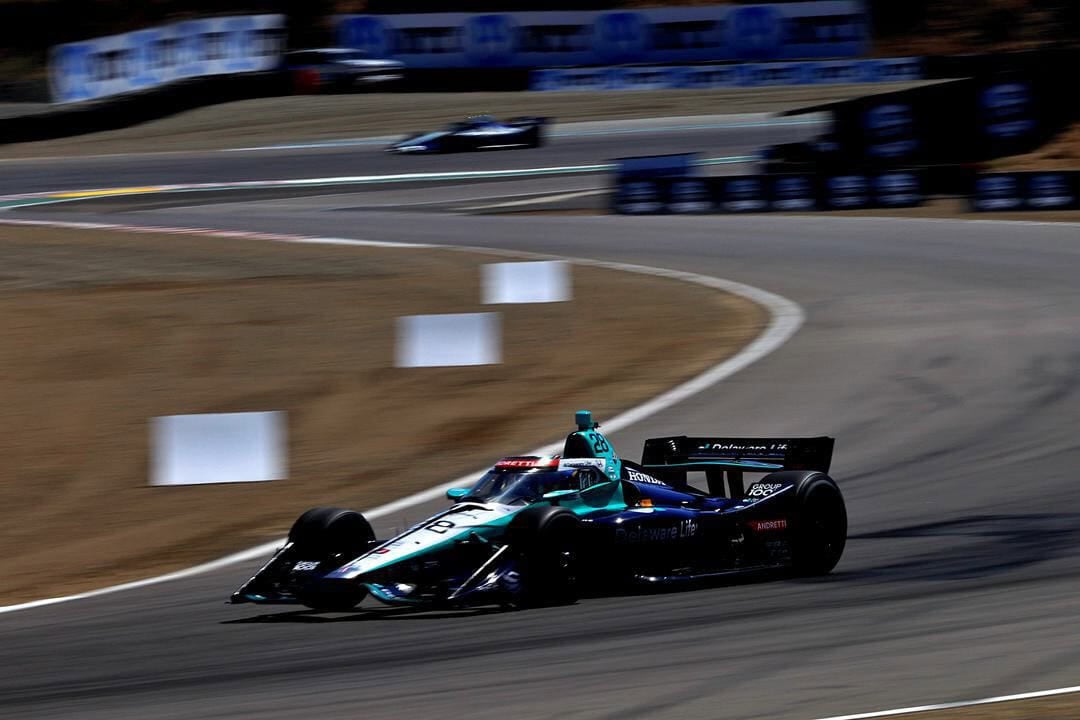Let’s travel back in time to 2024’s NTT IndyCar Series race at WeatherTech Raceway Laguna Seca.
Marcus Armstrong spins coming off turn 4 after contact with Christian Lundgaard. This is the final race before the hybrid system, so Armstrong can’t restart his stalled car.
He’s off the racing line, but the car is still in a dangerous position on the racing surface. Race control delays calling the yellow flag as the contact comes in the middle of the final sequence of green flag pit stops.
After that race weekend, a column came out lamenting the use of delaying the full course yellow until after green flag pit stops ended.
And then, wouldn’t you know it, that tradition returned in a big way.
Fast forward to Sunday (July 27). Rinus VeeKay and Kyle Kirkwood collide, resulting in VeeKay spinning off into the turn 3 gravel trap.
Alex Palou, Colton Herta and Will Power all had yet to make their pit stops, but VeeKay’s car was solidly beached in the gravel trap.
Race control waited until Palou, Herta and Power made their stops before calling for a full course yellow. How long did that take? About 90 seconds, based on a rough usage of an iPhone stopwatch.
Moving further into the race and Marcus Ericsson ran off track in the No. 28 Andretti Global Honda, spinning off the racing line en route to the Corkscrew.
How long did it take for this to cause a full-course yellow? Measuring from when Ericsson’s car first appeared on TV facing the wrong direction, it was about 90 to 91 seconds for the course to go full course yellow.
Meanwhile, Ericsson’s car was partially on trac,k facing oncoming traffic over a blind crest.
Suboptimal.
Several drivers have supported Race Control in their efforts to not compromise anybody’s race by keeping the track under green underneath a pit sequence so those who have not stopped can pit.
However, if there is a truly dangerous situation on the track, like what was seen on Sunday, then safety needs to come to the forefront, or there needs to be a change in regulations.
Ericsson’s car was unable to get restarted on its own as the team radio playing on the broadcast indicated numerous errors on the pit stand. Drivers being able to restart their cars on road and street courses has cut down on yellows and red flags, especially in practice.
However, it is abundantly clear that there still needs to be a change in race procedure to ensure that vehicles that cannot be restarted can be moved without threatening the safety of marshals or ruining competitors’ race strategy.
The latter has been the main focus of IndyCar’s race control, and it will be the focus now.
Sports car racing has had no problem implementing slow zones, especially at the 24 Hours of Le Mans, when a car goes off at a random corner that doesn’t affect over 98% of the rest of the lap.
So let’s propose two changes so the old Teddy Roosevelt quote about complaining and solutions doesn’t come true in this situation. In situations where a driver’s health is not at risk (like VeeKay or Ericsson’s situations), implement slow zones in the area of the track where the issue is.
There are about a dozen micro-sectors around WeatherTech Raceway. That can be race control’s boundaries for setting up slow zones.
The second change? For incidents that require full course yellows, don’t close the pits.
That policy started in the early ’90s and has remained in use ever since, but why?
It would make much more sense to keep the pits open when a yellow comes out, especially with how advanced modern electronic scoring is. Race Control can mandate, as soon as a full course yellow comes out, that anybody who wants to pit can, but mandate a maximum speed for traveling around the race course with no passing.
There are ways to make things work for everybody. WeatherTech Raceway was not a shining example of everything working in cohesion.
There’s still time to get things right before going to Portland in August.
Christopher DeHarde has covered IndyCar racing and the Road to Indy for various outlets since 2014. In addition to open wheel racing, DeHarde has also covered IMSA and various short track racing events around Indiana. Originally from New Orleans, DeHarde moved to the Indianapolis area in 2017 to further pursue a career as a motorsports writer.




